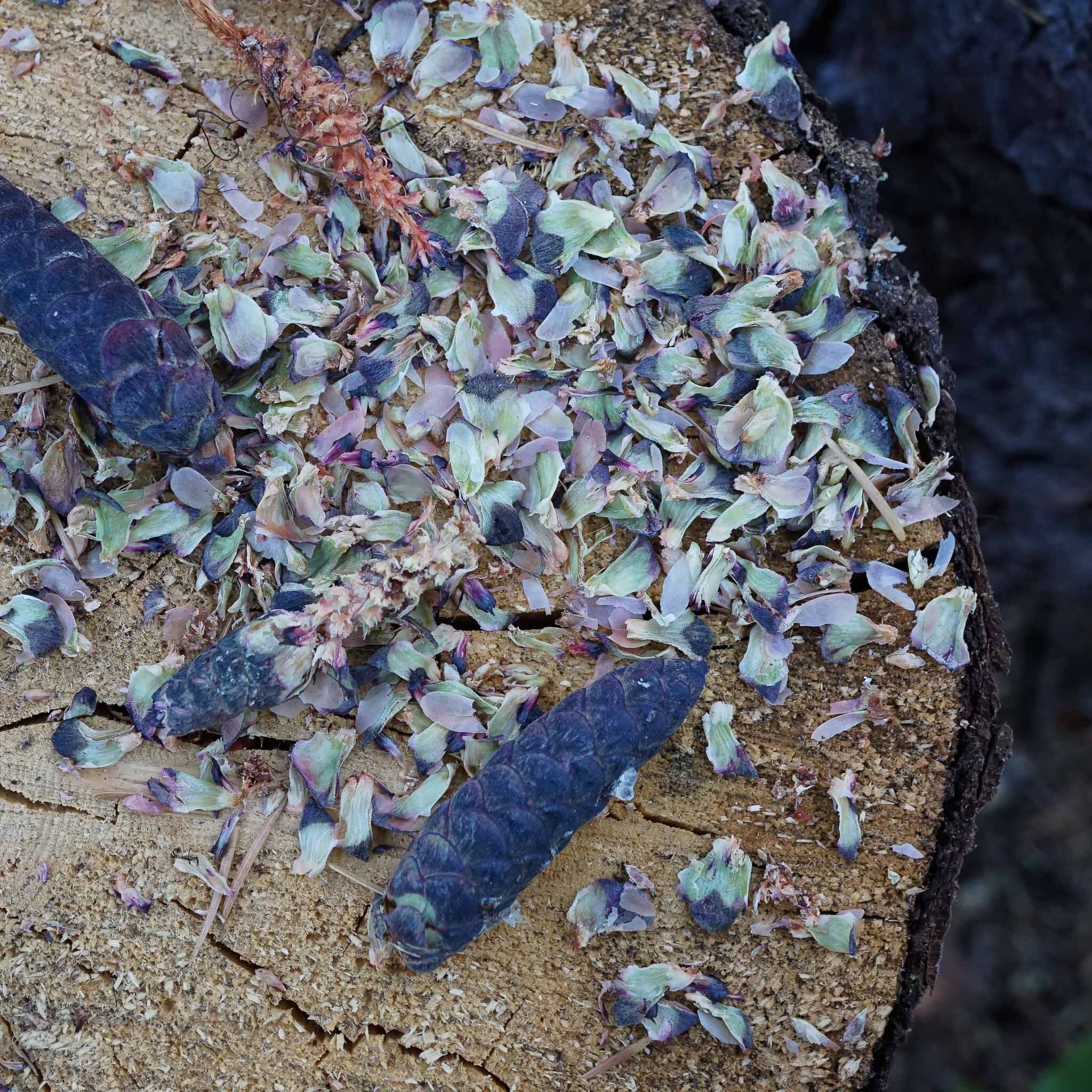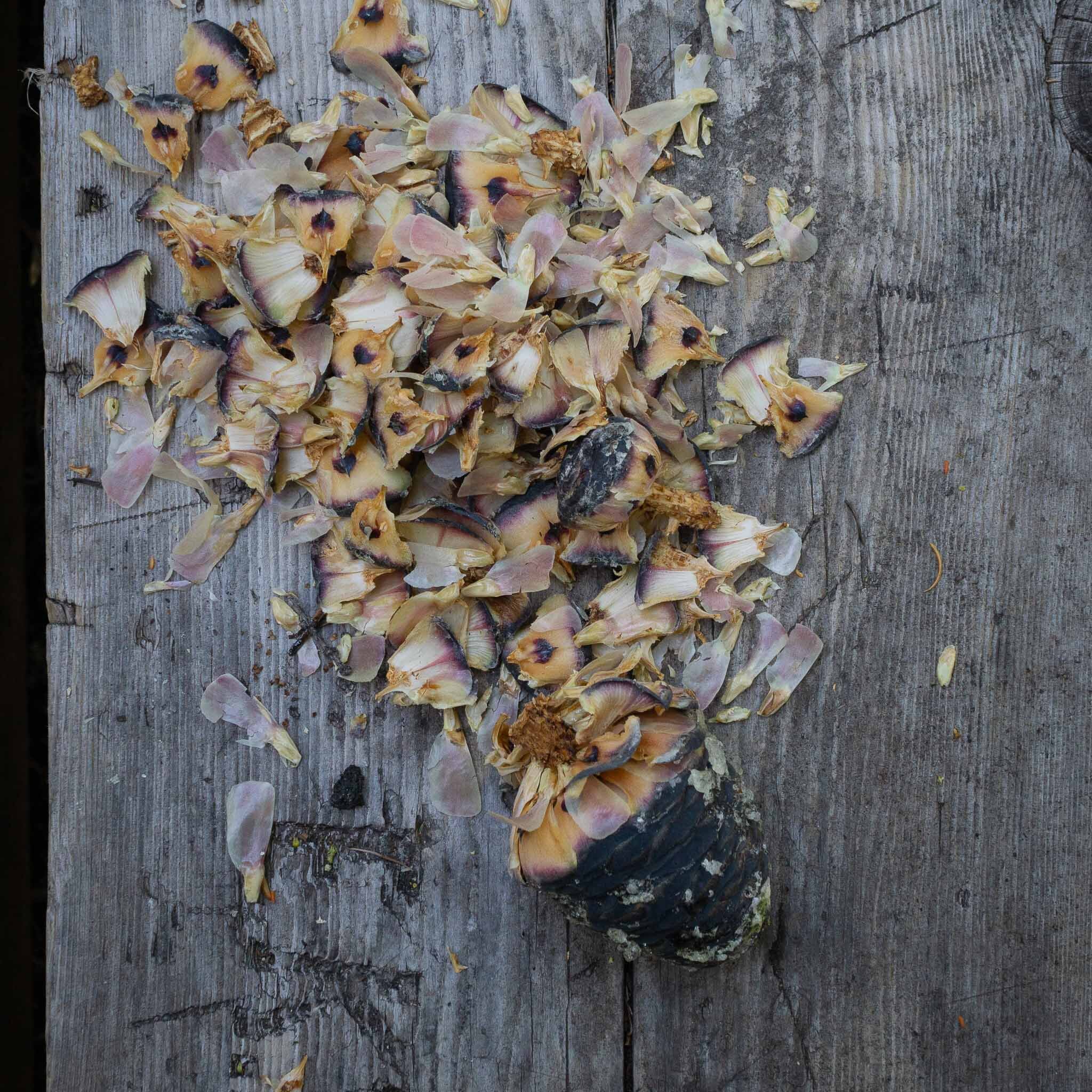What’s going on in the woods right now? Go outside and listen carefully. You may hear a heavy plop, plop as green cones drop from high above. You may even find the cones stacked in piles.
In August or early September, the seeds inside most PNW conifers are not quite ripe. So why are cones dropping, and why are they dropping now?
Douglas squirrels consider this the best time to stock up on conifer seeds. For a squirrel, it’s easy to snip off a cone high in a tree, drop it to the ground, and hope to harvest 50 or so slightly unripe seeds at once. The alternative is to wait for the seeds to ripen a bit more, but risk the cones opening and releasing their seeds. This would necessitate searching the ground for seeds one by one, which a squirrel will not do.
Douglas squirrels harvest cones from a variety of PNW conifers. Last week, I was camped at mid-elevation as part of a WTA trail crew. Before sunrise, I heard the thump of cones dropping from a mountain hemlock, Tsuga mertensiana, and a Pacific silver fir, Abies amabilis, near my tent. For both types of cones, Douglas squirrels dismembered them scale by scale and ate the seeds.
Occasionally, squirrels sit in the same spot over and over, creating an ever-larger pile of cast-off cone bits.
Squirrels have a choice of eating the seeds on the spot or stashing the cones in “middens” to eat later in the winter. They do both, much like people do when they pick blueberries.
This is what the seeds look like. On an intact cone, two seeds sit under each cone scale. Each seed has a tiny wing.
Douglas squirrels work at a frenetic pace, snipping off cones in mere seconds and then scampering down to retrieve them. John Muir estimated that 50% of all cones in the Sierra conifer forests were snipped off and handled by Douglas squirrels. Read
In the PNW, within a month from now, cones that remain up in trees will start to open and release their winged seeds. Once the seeds reach the forest floor, they provide a banquet for many birds and small mammals.
Read more in this blog about Douglas squirrels harvesting cones.



